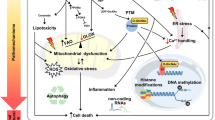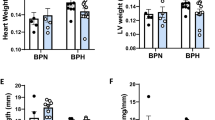Abstract
Diabetes is a rapidly increasing disease that enhances the chances of heart failure twofold to fourfold (as compared to age and sex matched nondiabetics) and becomes a leading cause of morbidity and mortality. There are two broad classifications of diabetes: type1 diabetes (T1D) and type2 diabetes (T2D). Several mice models mimic both T1D and T2D in humans. However, the genetic intervention to ameliorate diabetic cardiomyopathy in these mice often requires creating double knockout (DKO). In order to assess the therapeutic potential of a gene, that specific gene is either overexpressed (transgenic expression) or abrogated (knockout) in the diabetic mice. If the genetic mice model for diabetes is used, it is necessary to create DKO with transgenic/knockout of the target gene to investigate the specific role of that gene in pathological cardiac remodeling in diabetics. One of the important genes involved in extracellular matrix (ECM) remodeling in diabetes is matrix metalloproteinase-9 (Mmp9). Mmp9 is a collagenase that remains latent in healthy hearts but induced in diabetic hearts. Activated Mmp9 degrades extracellular matrix (ECM) and increases matrix turnover causing cardiac fibrosis that leads to heart failure. Insulin2 mutant (Ins2+/−) Akita is a genetic model for T1D that becomes diabetic spontaneously at the age of 3–4 weeks and show robust hyperglycemia at the age of 10–12 weeks. It is a chronic model of T1D. In Ins2+/− Akita, Mmp9 is induced. To investigate the specific role of Mmp9 in diabetic hearts, it is necessary to create diabetic mice where Mmp9 gene is deleted. Here, we describe the method to generate Ins2+/−/Mmp9−/− (DKO) mice to determine whether the abrogation of Mmp9 ameliorates diabetic cardiomyopathy.
Access this chapter
Tax calculation will be finalised at checkout
Purchases are for personal use only
Similar content being viewed by others
References
Wild S, Roglic G, Green A, Sicree R, King H (2004) Global prevalence of diabetes: estimates for the year 2000 and projections for 2030. Diabetes Care 27:1047–1053
Chavali V, Tyagi SC, Mishra PK (2013) Predictors and prevention of diabetic cardiomyopathy. Diabetes Metab Syndr Obes 6:151–160
Mathew V, Gersh BJ, Williams BA, Laskey WK, Willerson JT, Tilbury RT, Davis BR, Holmes DR Jr (2004) Outcomes in patients with diabetes mellitus undergoing percutaneous coronary intervention in the current era: a report from the Prevention of REStenosis with Tranilast and its Outcomes (PRESTO) trial. Circulation 109:476–480
Pignone M, Alberts MJ, Colwell JA, Cushman M, Inzucchi SE, Mukherjee D, Rosenson RS, Williams CD, Wilson PW, Kirkman MS (2010) Aspirin for primary prevention of cardiovascular events in people with diabetes: a position statement of the American Diabetes Association, a scientific statement of the American Heart Association, and an expert consensus document of the American College of Cardiology Foundation. Diabetes Care 33:1395–1402
Rota M, LeCapitaine N, Hosoda T, Boni A, De AA, Padin-Iruegas ME, Esposito G, Vitale S, Urbanek K, Casarsa C, Giorgio M, Luscher TF, Pelicci PG, Anversa P, Leri A, Kajstura J (2006) Diabetes promotes cardiac stem cell aging and heart failure, which are prevented by deletion of the p66shc gene. Circ Res 99:42–52
Sarwar N, Gao P, Seshasai SR, Gobin R, Kaptoge S, Di AE, Ingelsson E, Lawlor DA, Selvin E, Stampfer M, Stehouwer CD, Lewington S, Pennells L, Thompson A, Sattar N, White IR, Ray KK, Danesh J (2010) Diabetes mellitus, fasting blood glucose concentration, and risk of vascular disease: a collaborative meta-analysis of 102 prospective studies. Lancet 375:2215–2222
Schramm TK, Gislason GH, Kober L, Rasmussen S, Rasmussen JN, Abildstrom SZ, Hansen ML, Folke F, Buch P, Madsen M, Vaag A, Torp-Pedersen C (2008) Diabetes patients requiring glucose-lowering therapy and nondiabetics with a prior myocardial infarction carry the same cardiovascular risk: a population study of 3.3 million people. Circulation 117:1945–1954
Spencer EA, Pirie KL, Stevens RJ, Beral V, Brown A, Liu B, Green J, Reeves GK (2008) Diabetes and modifiable risk factors for cardiovascular disease: the prospective Million Women Study. Eur J Epidemiol 23:793–799
Herman WH, Zimmet P (2012) Type 2 diabetes: an epidemic requiring global attention and urgent action. Diabetes Care 35:943–944
King H, Aubert RE, Herman WH (1998) Global burden of diabetes, 1995-2025: prevalence, numerical estimates, and projections. Diabetes Care 21:1414–1431
Stoy J, Edghill EL, Flanagan SE, Ye H, Paz VP, Pluzhnikov A, Below JE, Hayes MG, Cox NJ, Lipkind GM, Lipton RB, Greeley SA, Patch AM, Ellard S, Steiner DF, Hattersley AT, Philipson LH, Bell GI (2007) Insulin gene mutations as a cause of permanent neonatal diabetes. Proc Natl Acad Sci U S A 104:15040–15044
Chang CL, Chen YC, Chen HM, Yang NS, Yang WC (2013) Natural cures for type 1 diabetes: a review of phytochemicals, biological actions, and clinical potential. Curr Med Chem 20:899–907
Simsek DG, Aycan Z, Ozen S, Cetinkaya S, Kara C, Abali S, Demir K, Tunc O, Ucakturk A, Asar G, Bas F, Cetinkaya E, Aydin M, Karaguzel G, Orbak Z, Siklar Z, Altincik A, Okten A, Ozkan B, Ocal G, Semiz S, Arslanoglu I, Evliyaoglu O, Bundak R, Darcan S (2013) Diabetes care, glycemic control, complications, and concomitant autoimmune diseases in children with type 1 diabetes in Turkey: a multicenter study. J Clin Res Pediatr Endocrinol 5:20–26
Mishra PK, Singh SR, Joshua IG, Tyagi SC (2010) Stem cells as a therapeutic target for diabetes. Front Biosci 15:461–477
Nokoff NJ, Rewers M, Cree GM (2012) The interplay of autoimmunity and insulin resistance in type 1 diabetes. Discov Med 13:115–122
Masoudi FA, Inzucchi SE (2007) Diabetes mellitus and heart failure: epidemiology, mechanisms, and pharmacotherapy. Am J Cardiol 99:113B–132B
Mishra PK, Tyagi N, Kumar M, Tyagi SC (2009) MicroRNAs as a therapeutic target for cardiovascular diseases. J Cell Mol Med 13:778–789
Agyemang C, Kunst AE, Bhopal R, Zaninotto P, Nazroo J, Unwin N, van Valkengoed I, Redekop WK, Stronks K (2013) A cross-national comparative study of metabolic syndrome among non-diabetic Dutch and English ethnic groups. Eur J Public Health 23:447–452
Barengo NC, Trejo R, Sposetti G (2013) Prevalence of type 2 diabetes in Argentina 1979-2012. Diabetes Metab Res Rev, Epub. July, 16
Gable D, Sanderson SC, Humphries SE (2007) Genotypes, obesity and type 2 diabetes–can genetic information motivate weight loss? A review. Clin Chem Lab Med 45:301–308
Zhang Q, Wang Y, Huang ES (2009) Changes in racial/ethnic disparities in the prevalence of Type 2 diabetes by obesity level among US adults. Ethn Health 14:439–457
Mishra PK, Tyagi N, Kundu S, Tyagi SC (2009) MicroRNAs are involved in homocysteine-induced cardiac remodeling. Cell Biochem Biophys 55:153–162
Mishra PK, Tyagi N, Sen U, Joshua IG, Tyagi SC (2010) Synergism in hyperhomocysteinemia and diabetes: role of PPAR gamma and tempol. Cardiovasc Diabetol 9:49–61
Mishra PK, Metreveli N, Tyagi SC (2010) MMP-9 gene ablation and TIMP-4 mitigate PAR-1-mediated cardiomyocyte dysfunction: a plausible role of dicer and miRNA. Cell Biochem Biophys 57:67–76
Mishra PK, Chavali V, Metreveli N, Tyagi SC (2012) Ablation of MMP9 induces survival and differentiation of cardiac stem cells into cardiomyocytes in the heart of diabetics: a role of extracellular matrix. Can J Physiol Pharmacol 90:353–360
Mishra PK, Kuypers NJ, Singh SR, Leiberh ND, Chavali V, Tyagi SC (2013) Cardiac Stem Cell Niche, MMP9, and Culture and Differentiation of Embryonic Stem Cells. Methods Mol Biol 1035:153–163
Buralli S, Dini FL, Ballo P, Conti U, Fontanive P, Duranti E, Metelli MR, Marzilli M, Taddei S (2010) Circulating matrix metalloproteinase-3 and metalloproteinase-9 and tissue Doppler measures of diastolic dysfunction to risk stratify patients with systolic heart failure. Am J Cardiol 105:853–856
Bradham WS, Moe G, Wendt KA, Scott AA, Konig A, Romanova M, Naik G, Spinale FG (2002) TNF-alpha and myocardial matrix metalloproteinases in heart failure: relationship to LV remodeling. Am J Physiol Heart Circ Physiol 282:H1288–H1295
Ducharme A, Frantz S, Aikawa M, Rabkin E, Lindsey M, Rohde LE, Schoen FJ, Kelly RA, Werb Z, Libby P, Lee RT (2000) Targeted deletion of matrix metalloproteinase-9 attenuates left ventricular enlargement and collagen accumulation after experimental myocardial infarction. J Clin Invest 106:55–62
Lindsey ML, Escobar GP, Dobrucki LW, Goshorn DK, Bouges S, Mingoia JT, McClister DM Jr, Su H, Gannon J, MacGillivray C, Lee RT, Sinusas AJ, Spinale FG (2006) Matrix metalloproteinase-9 gene deletion facilitates angiogenesis after myocardial infarction. Am J Physiol Heart Circ Physiol 290:H232–H239
Spinale FG (2002) Matrix metalloproteinases: regulation and dysregulation in the failing heart. Circ Res 90:520–530
Romanic AM, Harrison SM, Bao W, Burns-Kurtis CL, Pickering S, Gu J, Grau E, Mao J, Sathe GM, Ohlstein EH, Yue TL (2002) Myocardial protection from ischemia/reperfusion injury by targeted deletion of matrix metalloproteinase-9. Cardiovasc Res 54:549–558
Acknowledgement
This work is supported by National Institute of Health grants HL-113281 and HL116205 to Paras Kumar Mishra.
Author information
Authors and Affiliations
Corresponding author
Editor information
Editors and Affiliations
Rights and permissions
Copyright information
© 2014 Springer Science+Business Media New York
About this protocol
Cite this protocol
Chavali, V., Nandi, S.S., Singh, S.R., Mishra, P.K. (2014). Generating Double Knockout Mice to Model Genetic Intervention for Diabetic Cardiomyopathy in Humans. In: Singh, S., Coppola, V. (eds) Mouse Genetics. Methods in Molecular Biology, vol 1194. Humana Press, New York, NY. https://doi.org/10.1007/978-1-4939-1215-5_22
Download citation
DOI: https://doi.org/10.1007/978-1-4939-1215-5_22
Published:
Publisher Name: Humana Press, New York, NY
Print ISBN: 978-1-4939-1214-8
Online ISBN: 978-1-4939-1215-5
eBook Packages: Springer Protocols




